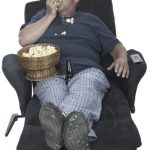 It’s so easy to be lazy, not continuing your exercise routine during the cold, often torturous, winter months in Canada. But, it’s not impossible to continue with a regular regimen of exercise. The two most dangerous conditions to be aware of when exercising in extreme cold temperatures are frostbite and hypothermia. Read on to learn tips that will help you get through the grueling winter weather safely and effectively.
It’s so easy to be lazy, not continuing your exercise routine during the cold, often torturous, winter months in Canada. But, it’s not impossible to continue with a regular regimen of exercise. The two most dangerous conditions to be aware of when exercising in extreme cold temperatures are frostbite and hypothermia. Read on to learn tips that will help you get through the grueling winter weather safely and effectively.
Believe it or not, one of the most common mistakes that people make it dressing too warmly when exercising in cold temperatures. While this may seem like a good idea, it’s not. When you exercise your body temperature increases and you begin to sweat and when you sweat in the cold temperatures you can create a chilling effect when the sweat dries. The solution to this problem is to dress in layers. This way you are able to remove layers as you get warmer and start to sweat and can put them back on if you start to feel cold again. It may take some time to figure out the best combination of clothing for your exercise routine, but it of the utmost importance. It is also important to stay dry, so wearing a waterproof outer layer is recommended.
Protecting your hands and feet during cold winter temperatures is absolutely necessary as blood flow is concentrated at the core of your body in cold temperatures. This leaves your hands and feet susceptible to frostbite. In order to prevent this, consider layering socks and mittens/gloves. And don’t forget your ears as they are also at risk of frostbite; think about wearing a hat, headband or scarf to keep them protected. Early warning signs of frostbite include pain, burning, numbness and tingling, and a loss of sensation. If you begin to experience these signs, get out of the cold temperature and start to slowly warm up the affected area.
Try to avoid stop and go activities, for example, running for two minutes, followed by walking for two minutes, etc. as this will increase the chance that you will get a chill because your body temperature is fluctuating constantly. Instead, find a comfortable workout intensity and stick to it for the entire time. If there is a wind chill, it can penetrate the clothing that you’re wearing and you will be at risk of hypothermia. Hypothermia is a severe reaction to being exposed to cold temperatures – it is defined as a drop in your core body temperature. Early signs and symptoms of hypothermia include: shivering, “goose bumps”, numbness, and muscle stiffness. If you begin to experience any of these signs, get indoors as quickly as possible and slowly warm yourself using blankets and extra clothing.
In addition to paying attention to what you wear, make sure you choose appropriate footwear for needed traction on slippery surfaces, so the risk of falling is minimized. And remember, as the days are shorter in the winter months; be sure to wear reflective gear if exercising in the dark.
While you may not feel thirsty while exercising in the cold, be sure to stay hydrated. If you’re dehydrated you are at an increased risk of frostbite because your body is unable to regulate your core temperature properly. And even though, it may not be sunny, be sure to wear sunscreen. Burns do occur during the winter so be sure to apply a sunscreen containing at least SPF 30 to block against UVA and UVB rays. Wearing sunglasses or goggles will also protect your eyes against the damaging sunrays.
Keep in mind that while most people can exercise safely in the frigid temperatures, there are certain individuals who should consult with their doctor before doing so. These individuals include those that have chronic conditions such asthma and heart disease. If you’re concerned about how exercising in the cold may negatively affect any health condition that you suffer from, speak with your doctor first to ease your concerns. Even if you’re healthy, if the temperature dips into a dangerously cold range, consider moving indoors to exercise. There are a number of fun, indoor activities that you can participate in to keep fit.
Related Reading: Sitting at work deadlier than smoking!
Advertisement
